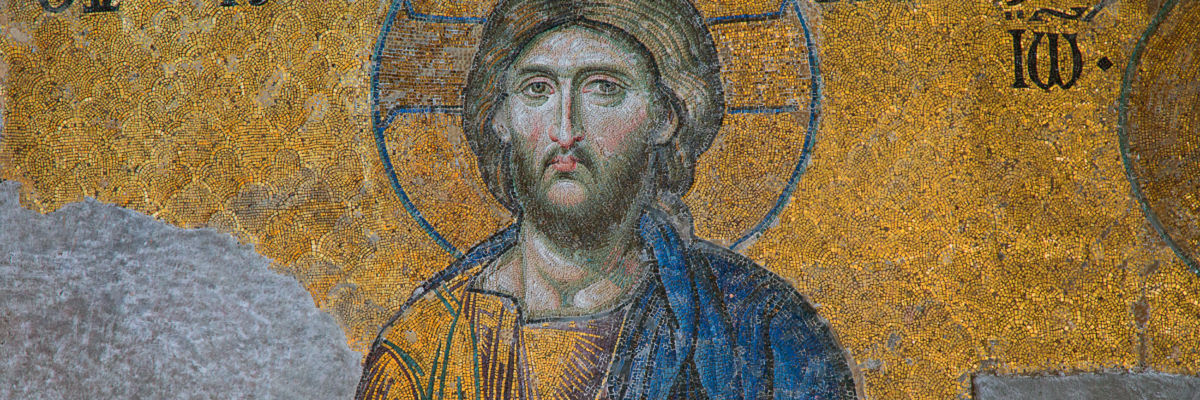
Reza Aslan is a professor of creative writing at the University of California, Riverside and the author of the much-talked-about new book, Zealot: The Life and Times of Jesus of Nazareth. His latest piece in the Washington Post is titled Five Myths About Jesus.
Aslan’s assertions are nothing new in the world of Catholic apologetics, and the fact that he makes them at all should come as no surprise: Aslan is a former Evangelical Christian who now identifies as a practitioner of Islam. Therefore, it is not a stretch to imagine that his own religious background may have some infulence on his opinion of the historical reliabilty of the Gospels.
Myth #1: “Jesus was born in Bethlehem.”
Aslan claims that Jesus was most likely born in Nazareth, not Bethlehem, because he was known throughout his life as “the Nazarene.” Supposedly, this created a problem for the early Christians, because one of the Jewish prophecies about the coming Messiah required him, as a descendant of King David, to be born in the city of Bethlehem.
According to Aslan, the Roman census encompassed only Judea, Samaria and Idumea, and not Galilee where Jesus’s family lived. He goes on to explain, “Luke places Jesus’s birth in Bethlehem not because it took place there but because that story fulfills the words of the prophet Micah.”
Critics of the Bible have often claimed that there is no record of a Roman census, and thus the account in Luke cannot be true. As other apologists have rightly pointed out, there is a record of it: in Luke’s Gospel. Critics just don’t want to accept it.
Aslan, on the other hand, does seem to accept that a census happened; only he claims it encompassed a limited area in the Roman Empire. The problem with this is that our record states clearly, ”In those days a decree went out from Caesar Augustus that all the world should be enrolled” (Lk. 2:1).
Additionally, Alsan explains, “since the purpose of a census was taxation, Roman law assessed an individual’s property in the place of his residence, not his birthplace.” However, my colleague Jimmy Akin points out:
If you assume it was a census, as many do, then it’s going to cause you problems, because there was no census in the appropriate time frame. There was, however, a broad-based registration or “enrollment,” that occurred in this period.
For more on this, I recommend Was Christ Born in Bethlehem? by William Mitchell Ramsay, available here.
Myth #2: “Jesus was an only child.”
Aslan claims that, contrary to the Catholic doctrine of Mary’s perpetual virginity, Jesus in fact had blood brothers and sisters:
Some Catholic theologians have argued that the Greek word the Gospels use to describe Jesus’s brothers—“adelphos”—could also mean “cousins” or “step-brothers,” and that these could be Joseph’s children from a previous marriage. While that may be true, nowhere in the New Testament is “adelphos” used to mean anything other than “brother.” So there is no rational argument for viewing Jesus as an only child.
I’m not a Greek scholar (and neither is Aslan), but he seems to miss the point entirely. He claims that nowhere in the New Testament is the word adelphos used to mean anything other than brother—but that is precisely what is debated.
The New American Standard New Testament Greek Lexicon (NAS) defines adelphos as “a brother, whether born of the same two parents or only of the same father or mother” or “a fellow believer.” The fact that this word has various meanings is a rational argument for viewing Jesus as the only child of the Blessed Virgin Mary.
The first defintion from the NAS lexicon would support the position that Joseph was an older man who had children from a previous marriage. The second definition serves as evidence that adelphos is indeed used in the New Testament to refer to something other than uterine brother. As a matter of fact, most of the time it is used to refer to something else. St. Paul uses the word repeatedly in reference to fellow believers.
For more on this, I recommend reading “The Case for Mary’s Perpetual Virginity” from Catholic Answers Magazine.
Myth #3: “Jesus had 12 disciples.”
Aslan claims that this myth is based on a misunderstanding of three categories of Jesus’ followers that are spoken of in Scripture as “disciples.” I’m not even sure why Aslan chose to address this. Most Christians I know understand that the term disciple is used interchangeably in the New Testament.
You can usually tell from the context which group of disciples is being referred to. For example, Matthew 8:18 refers to “great crowds around Jesus,” and as Aslan points out, crowds are sometimes referred to as disciples (cf. Lk.14:25-35). But just a few verses later Matthew writes, “And when he got into the boat, his disciples followed him.” Either this was a massive boat capable of holding “great crowds,” or we can more realistically assume that only a few of those who were present followed Jesus into the boat.
When we talk about the twelve disciples, we mean specifically the twelve apostles. That they are referred to as the twelve disciples comes from the Bible (cf. Matt. 10:1, Matt. 11:1, Luke 6:13, Luke 9:1), but it’s no myth there were twelve of them.
Myth #4: “Jesus had a trial before Pontius Pilate.”
Aslan claims that Jews generally did not receive Roman trials, let alone Jews accused of rebellion. In the article he explains:
In his 10 years as governor of Jerusalem, Pilate eagerly, and without trial, sent thousands to the cross, and the Jews lodged a complaint against him with the Roman emperor.
The truth is that we know very little about Pilate. Jewish philosopher and historian Philo tells us that Pilate was responsible for “executions without trial constantly repeated” (On The Embassy of Gauis, Book 38), but he never specifies the number or manner of executions, and we are not told that Jews never received Roman trials. Our best information comes from the canonical Gospels, and all four agree that Jesus had a trial before Pontius Pilate.
Myth #5: “Jesus was buried in a tomb.”
Aslan asserts that it is highly unlikely Jesus was brought down from the cross and placed in a tomb after the crucifixion. In his opinion, this would have been “an extremely unusual, perhaps unprecedented, act of benevolence on the part of the Romans.”
I don’t see how this could have constituted an “act of benevolence.” Joseph of Arimathea asked Pilate if he could retrieve the body of Jesus. Pilate agreed, but only after confirmation that Jesus was dead (Mark 15:44). It’s not as though the Romans took the body down themselves and handed it over to the disciples. Joseph was a respected member of the Jewish community (Mark 15:43), and we are not told how he persuaded Pilate to release the body; only that he did.
Aslan also claims it is not very likely that Jesus was taken down and placed in a rock-hewn tomb fit for the wealthiest men in Judea because this would be unlike every other criminal crucified by Rome. This is true, but Joseph was a rich man with the means to provide such a tomb (Matt. 27:57), and he was secretly a follower of Jesus (John 19:38).
Conclusion
Aslan’s article (and his book) is nothing more than a rehashing of arguments that have existed for over a century and been answered by countless Christian scholars. If you are seeking a thorough refutation of the idea that the Gospels are not a reliable account of the historical Jesus, I highly recommend reading the series Jesus of Nazareth by Pope Benedict XVI.
Jimmy Akin has produced a great critique of Alsan’s book Zealot that you can listen to here.



